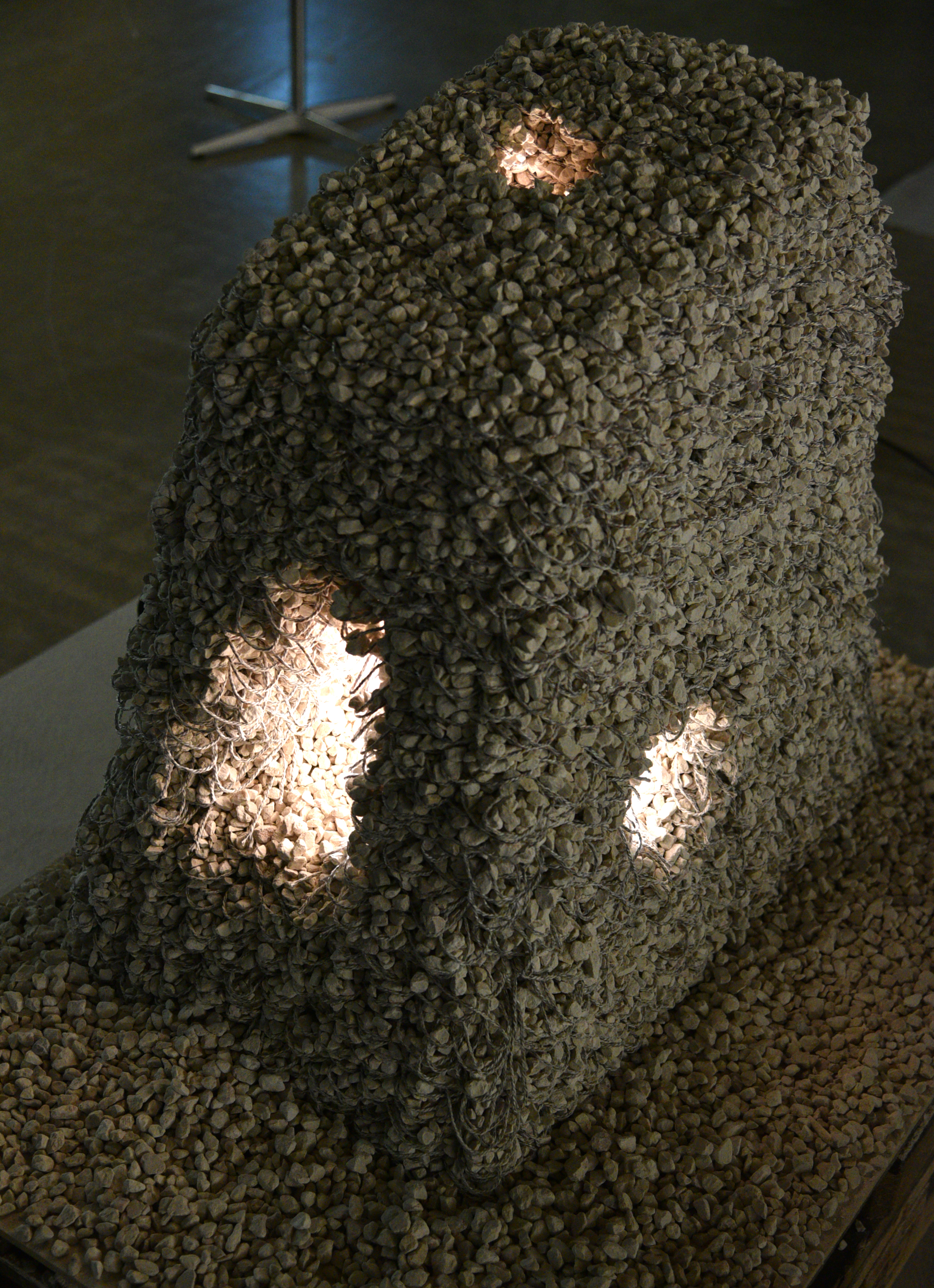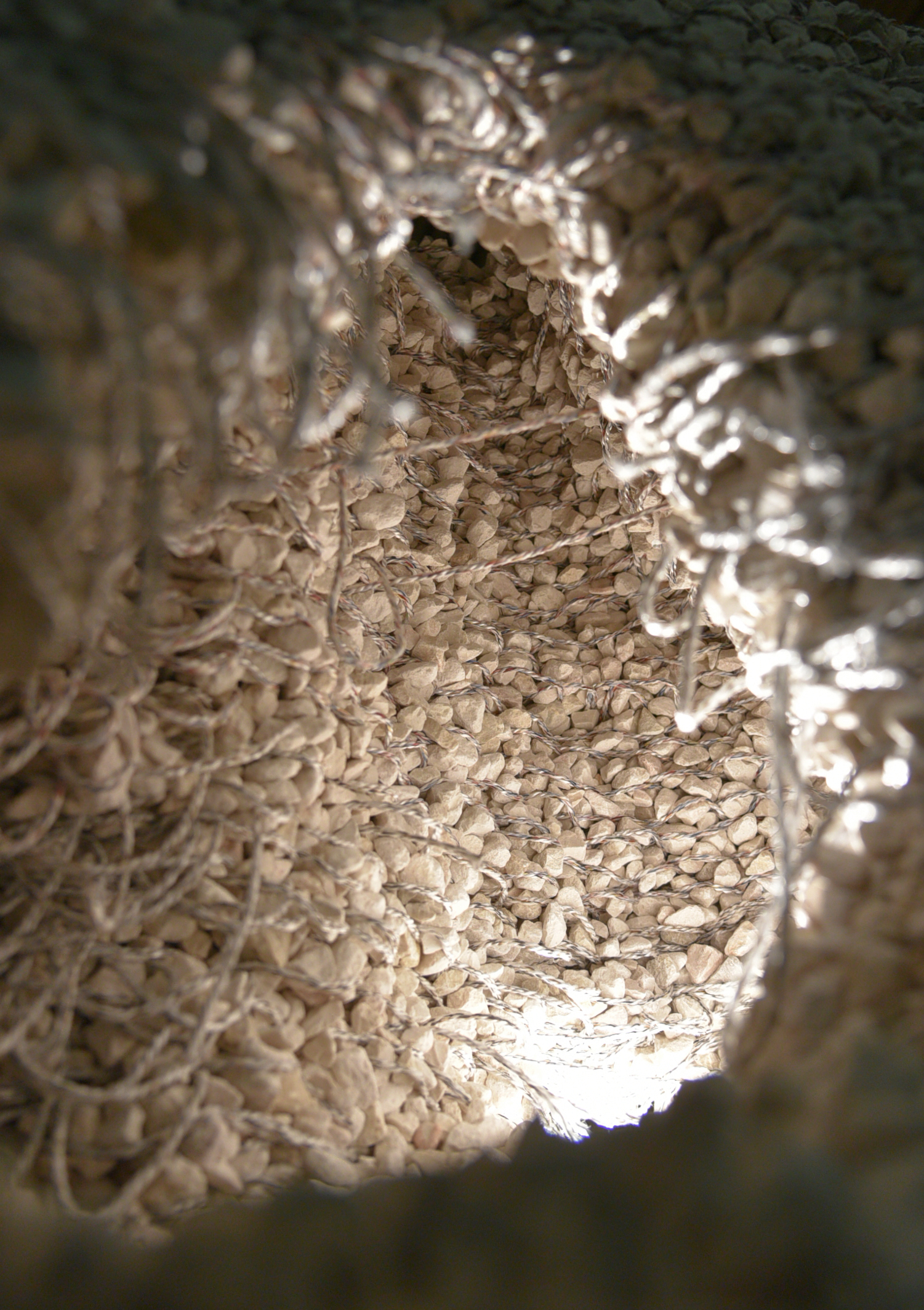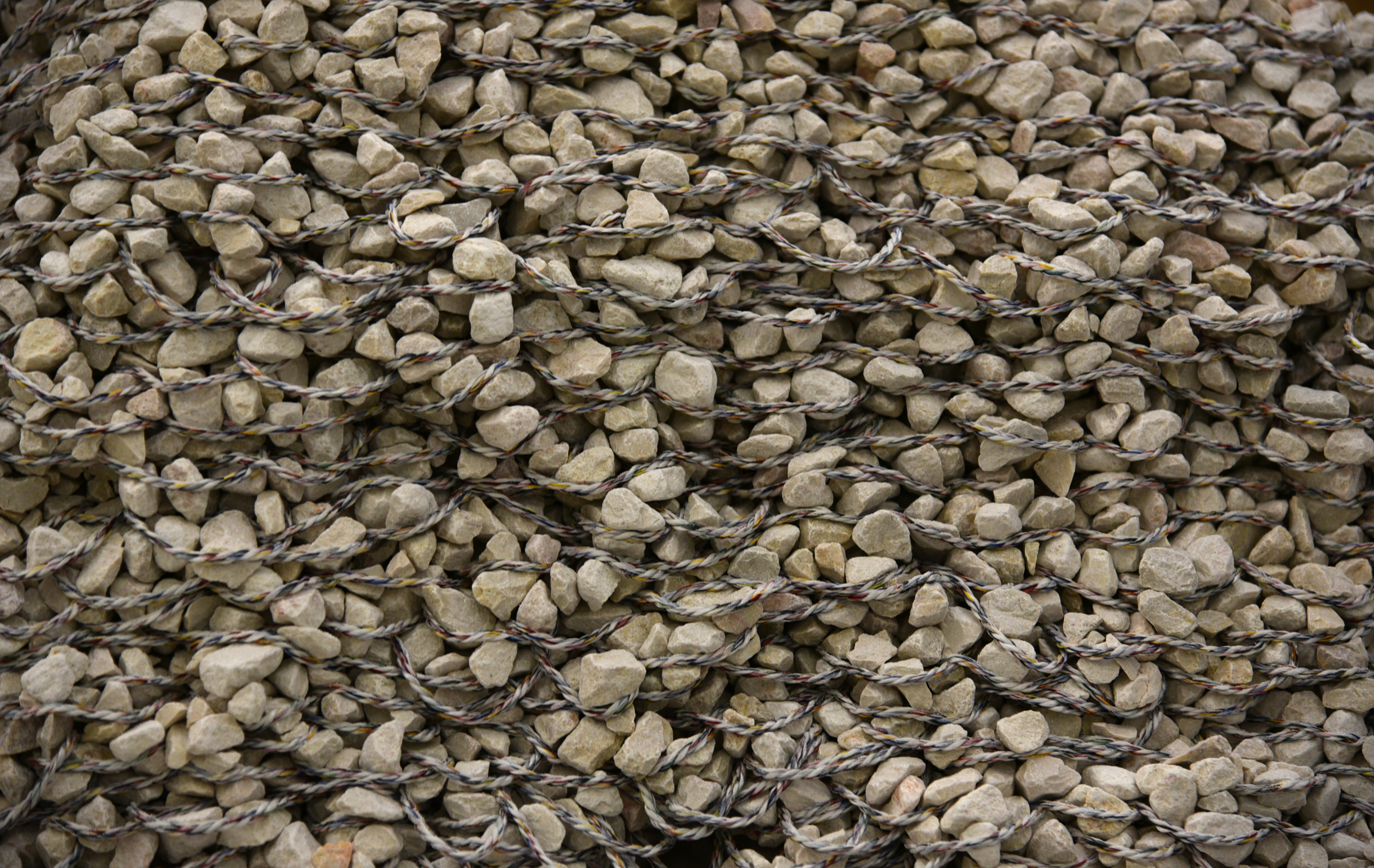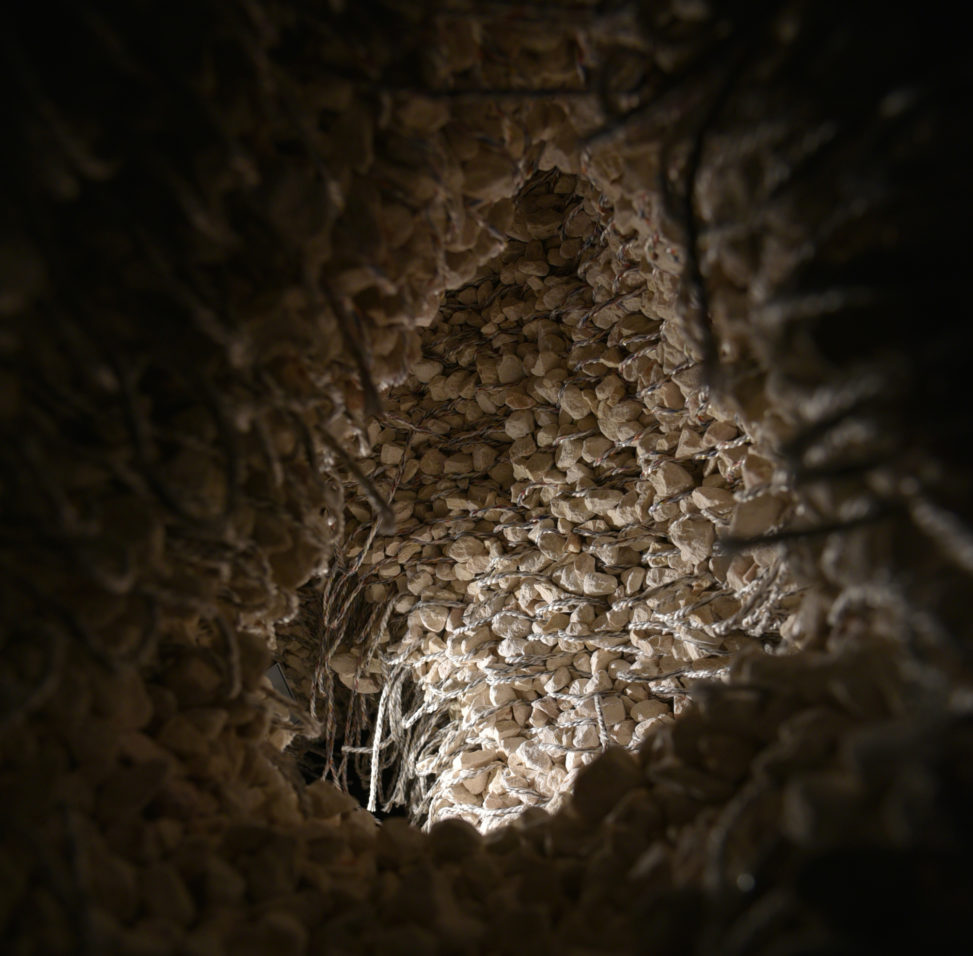Robotic fabrication of jammed structures.
The challenge in this project was to find effective ways of building using the UR5 robot, with granular material (stones) and thread in order to create stable structures. Our group worked on creating voids (tunnels) within larger volumes without using any formwork other than the stones themselves as support during the construction.

The strategy for creating the tunnels was to ’encode’ the shape of the voids in the string pattern, while building the whole volume without leaving any voids. After the construction has finished the stones filling the tunnels can be easily removed and the openings appear.
We developed a robotic setup and a coding strategy for our fabrication process. We then carried out a series of tests in order to develop a better understanding for the materials , add functionality to the tool and create a solid base for building a mature design.
Our additions to the existing tools for this technique can be summarised in the following two points:
1. The string pattern :
The position of the circles in the string pattern is of great importance for the aesthetics of the final surfaces. We wanted to achieve a visual continuity in the surfaces, so we introduced some control points (usually in the positions of discontinuity of the curves, such as the corners or the positions where curvature changes) and specified that a circle must always be placed in those positions.
The difference is visible in the following two models. One before the introduction of control points (model 1), and one after (model 2).

2. The tool
We developed a customised tool that has the following two components.
-The string placement component, for accurate placement of the string pattern.

-The rock placement guide, for assistance during the placement and packing of the rocks (which was done manually).

For our show-case model we wanted to exploit the maximum size that our setup (UR5 robot+ cutom tool) allowed for. We opted for a simple pyramid-like prism (the inclination of which was determined by our previous tests) that has a tunnel with a parabolic cross-section that creates 5 holes in the exterior surface. The ratio between full and void is 2 to 1 (33% void, 67% full)
Fabrication timelapse




In collaboration with Nizar Taha
Supervisors: Petrus Aejmelaeus-Lindström, Gergana Rusenova
This project was developed during the three weeks tutorial called “mini Jammed” in ETH, Zurich
